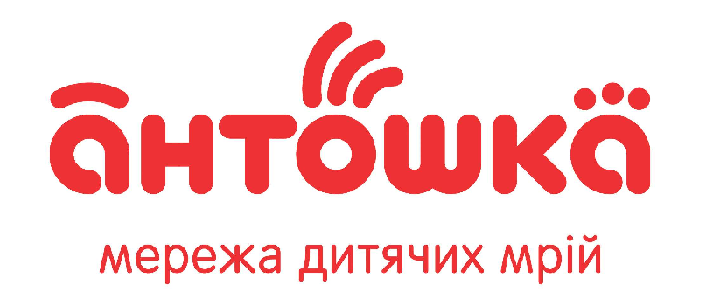
Collaborator Road Map. Five steps prior to eLearning implementation

If you have already been thinking about eLearning as an economical and effective form of staff training, but still stand at the parting of the ways and do not know where to go – the Collaborator Roadmap will help you. These are practical steps for the harmonious and effective implementation of the distance-learning platform, which we are developed based on our own experience in implementation of educational portals for various companies.
Step 0. Driver
Find or be ready to prepare your training portal administrator – an eLearning specialist.
You need own internal driver. You need your own employee who will take care of launching, monitoring, analyzing and developing educational processes. He or she should know everything about the company’s employees: relationships in the team, moods, expectations, problems. This person should encourage others to learn.
Step 1. Starting point – Perception
Make sure that your organization is ready for providing and updating training content as well as guiding the training in a practical way.
You should be aware of all the reasons for implementing distance learning. It is difficult to cover all employees with full-time offline trainings and other activities. Full-time training involves personal contact with trainer. Nevertheless, an active communication, together with frequent relocations, takes a lot of effort and it is natural that coaches get tired. It is common when a person “burns out” and the effectiveness of conducting offline trainings decreases. When it happens, you should start thinking about switching coaches to work that is more creative. The trainer can write electronic educational materials, create new resources, highlight the most necessary and interesting information. Moreover, at the same time, the full-time event, which is hold in the region, becomes more effective. Meetups will become more practice oriented and will better solve real business problems. The coach will come to the prepared audience who have already seen and read the subject material. If your trainers are ready for such a change – you can proceed to the second step.
Step 2. Importance of personal contacts
Make sure that you can communicate to each employee directly – at least by mobile phone or email.
Distance learning without direct personal contact with each employee is meaningless. If an employee does not receive a personal message – person receives nothing, therefore it is pointless to require something from the employee. You need direct contact.
Direct contact is a personal phone or email. Email address is particularly important, which is basic communication tool in eLearning. It can be employee’s corporate or private email – the one that is mostly used by the employee is the best.
Email address shouldn’t be impersonal (department@, manager@, etc.). Remember: shared means no one’s.
Companies very often create one common mail for store staff (sellers, managers, etc.). Each employee opens this mailbox and begins searching for a letter addressed to him among many other people’s messages. This is not correct from the moral and practical point of view. A personalized approach is needed.
If there is only one computer, each employee must have own mail account and use personal login and password for entering mailbox.
Step 3. Don’t just teach, but give “Knowledge Base”
Try not to teach, but give knowledge and necessary information in a form, which is convenient and friendly for employees.
It may sound strange, but training portal should not be associated with the training. The word “training” repels many people. Employees should not be “pushed” to the site for training. They should understand that the platform is the place where you can find all the information you need for doing your job. The training portal should involve a Knowledge Base, where you can find everything that will help improve your professional skills. Collaborator platform, which we develop and implement, in the first place is the Knowledge Base, and only then the training system.
This approach is especially important when working with experienced employees, who are confident that they know everything and do not need to learn anything additional. (More details about adult learning)
Distance learning should be presented in the following way: “We do not teach you, we give information in a convenient form for your professional activity and development.” Each employee should realize that increasing of his knowledge leads to increasing of own efficiency and his value for the company.
Step 4. Training is on the second place
Accept the fact that a working day of the staff is not intended for education. Training should be done in a laconic and systematic way with an individual approach.
It is very important not to forget that we train people who are already working. In case of school, university, or training center, an eight-hour working day is meant for studying, while eight hours of an employee are intended for solving of company’s operational tasks. The work namely is the main task. Learning is on the second place.
That is why training of adults should be based on several principles.
- Individualization
If you just divide employees into training groups and assign them for a course, the training could be perceived as: “That is what you want, I don’t need it.” There is a rejection and even a protest. The learning process should be as individual as possible. If there is a need to divide employees into training groups, it can be hidden using the “tags” function.
- Be short and to the point
A person should not spend a lot of time for learning.
The most of the working time an employee works – not studies. That’s why new information should be presented in a compact and informative way. Its uptaking should take a minimum of time. All training procedures are minimized, and the term “distance course” should mean something small and concise – as understandable and simple for perception as possible. Acquaintance with new information (it can be a course, video, book, article from a blog, presentation, poll, test, webinar, etc.) should not take more than one hour. If there will be a lot of information or it will be given in a complex way, a person will abandon the training soon.
Best of all, when a new portion of information is so compact and intelligible that it can be understood and learned on the way to work or simply by reading before bed.
- Regularity
However, even well thought-out, compact and understandable information will not have an effect if employees receive it chaotically and unevenly. If you assign training tasks for every day – it can easily tire a person, leading to ignoration. If the tasks come very rarely and randomly – some of them may simply not be noticed or skipped. It is obvious that such as training is unproductive. Tasks should come bit by bit, but regularly. For example, when new information comes once a week, in one pre-selected and most convenient for learning day, a person will gradually develop a habit to training. Therefore, the employees will easily organize their time for work and study.
A very illustrative example of the effectiveness of regular training is the policy of one of our clients – “Kovbas Market” retail network. They provide their employees with new information every week, on Tuesdays. And every Tuesday people enter the portal and see a little text, or a presentation, or a small video. It takes less than an hour to learn and pass a small test. People already expect that every Tuesday they will receive something new and then they will not be disturbed during the next 6 days. If someone did not have time this day, then the task can be done till next Tuesday. And this approach works!
- There is another benefit in such organization of training process. If you send employees something else on another day of the week, for example, on Wednesday, this goes beyond the ordinary, it will be unexpected and immediately attract attention.
Thus, you can notify people about an important event or submit the most important information for broad audience. However, such informing should be used very rarely and in exceptional cases!
Step 5. Results are obvious!
Think over and determine those indicators of staff professionalism development, which will reflect the success in training.
The goal of eLearning is to increase the effectiveness of employees, to give them opportunities for development and to help them in it. Therefore, it is very useful when a person observes his or her changes in quality of practical work along with the growth of learning results. In our platform, it is possible to show how training is connected with employee’s work outcomes. Besides the educational rating, Collaborator can display any external indicator. For example, such an indicator can be success in sales and negotiations, or another indicator of staff effectiveness. The best learning incentive for a person is to see how the growth of his training rating helps in professional and personal advancement.
These are the first and the most difficult steps in implementation of distance learning. Nevertheless, even taken all together, they are unlikely to help in achieving the desired results without one important element – the driver – your eLearning specialist.



































